When it comes to attracting new visitors, many companies still rely heavily on display advertising rather than sponsored posts.
Why though?
The average display click-through rate is dramatically low. In fact, the average rate across all ad formats is only 0.05 percent.
Plus, ad blocking software continues to grow in popularity. Viewability is affected by ad blocking, with Google reporting that 56.1 percent of all impressions aren’t seen by users due to ad-blocking solutions.
Like anything else, display ads come with their own package of pros and cons.
Display advertising has one of the most effective ways of nurturing traffic by bringing users who have already visited a certain website back. Using remarketing for banner ads may be a very powerful strategy if you think through the details.
Based on multiple research studies conducted by Criteo, remarketing can boost sales by 30 to 70 percent. CheapoAir, for example, was able to increase its sales by 37 percent with the help of remarketing.
Nevertheless, even though remarketing can be an incredibly efficient channel, it won’t bring you new visitors.
So what channels can and will attract visitors from websites we want them to come from? Who would be willing to pay you for your products and services?
If we look at our options, and if we filter out organic channels, all we have left is native advertising and sponsored content.
Native Advertising vs. Sponsored Content
Many publishers don’t understand the subtle differences between “native advertising” and “sponsored content.” Often, these terms are used interchangeably. But they are two different content products.
Native advertising can be described as an expansive advertising umbrella that allows displaying ad sections with relevant posts among site’s content. Here’s a good visualization of what native advertising looks like on desktop.
Unlike native advertising, sponsored content can reach out to a limited audience, but only on those sites you’ve selected yourself. SEJ has a lot of examples of sponsored content, like this piece sponsored by Careerplay.
You can bend yourself backwards while trying to get creative and original with your sponsored article, but if it pushes a product right from the introduction part, then it’s unlikely anyone would visit your site, or, what’s more important, to recognize your brand as credible and trustworthy.
The Enigma of Native Advertising
Things start getting a little tricky here.
With native ads, you can’t just simply place them on a website you selected. You need to do it via an advertising platform.
If you Google ‘native ads platforms’, you’ll see an overwhelming number of different options.
So you just need to pick one and your ad will shine bright on the website you’ve chosen, right?
Wrong.
The problem with these advertising networks is that neither of them tells you what site do they partner with. You will have to contact their sales department to get the details.
Luckily, I have a life hacking solution for you so you won’t have to go through an infuriating process of manually contacting each and every platform.
In order to display ads, ad platforms place their code on publisher’s websites. You can track this code to find out which site is connected to a certain ad platform.
There’s a website called trends.builtwith.com that reads other websites’ codes in its database and shows you a list of sites that are part of a specific native ads platforms.
Of course, BuiltWith can’t crawl each and every website, but what they have is definitely something to work with. For instance, here’s a list of sites that use Sharethough (almost 2,000 sites):
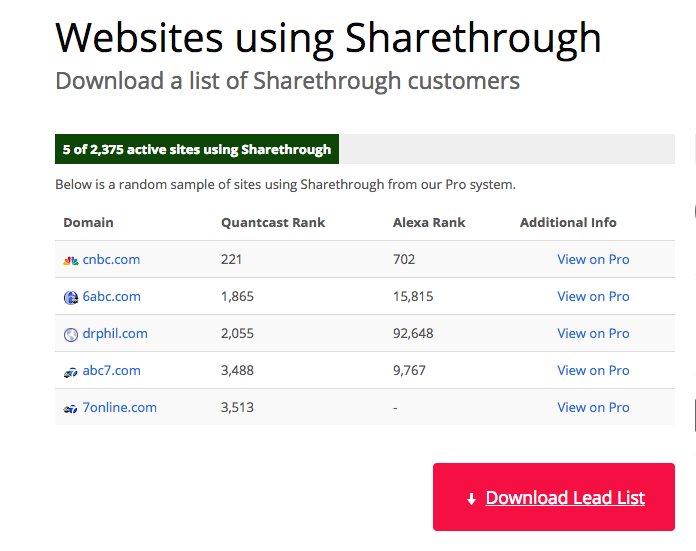
In my opinion, native ads are a great match for mass consumption products when reaching out to a broader audience is more important than targeting a small group of users.
When it comes to B2B, native ads may appear to be completely irrelevant because oftentimes websites that are connected with ads platforms aren’t highly tailored media resources. So the only option, in this case, are sponsored posts that don’t have an extensive outreach but can attract desirable clients.
That said, you need to carefully hand pick websites where you want to feature your sponsored content.
How to Select the Right Sites for Your Sponsored Posts
The least thorny way of finding sites that fit your requirements is to check websites that refer to your competitors. There are quite a few tools that will assist you with that, such as Ahrefs and Majestic.
After you find sites you were looking for, check if these sites get any organic traffic from search results, using tools like SEMrush or Spyfu. If they do, that’s something to keep in mind when you are researching if your competitor is getting any traffic from that specific domain.
In case this page doesn’t have any organic traffic but receives referral traffic instead, then you found what you were looking for — you found your advertising platform.
Take a look at what direction does the traffic coming from Razorssocial.com flow:
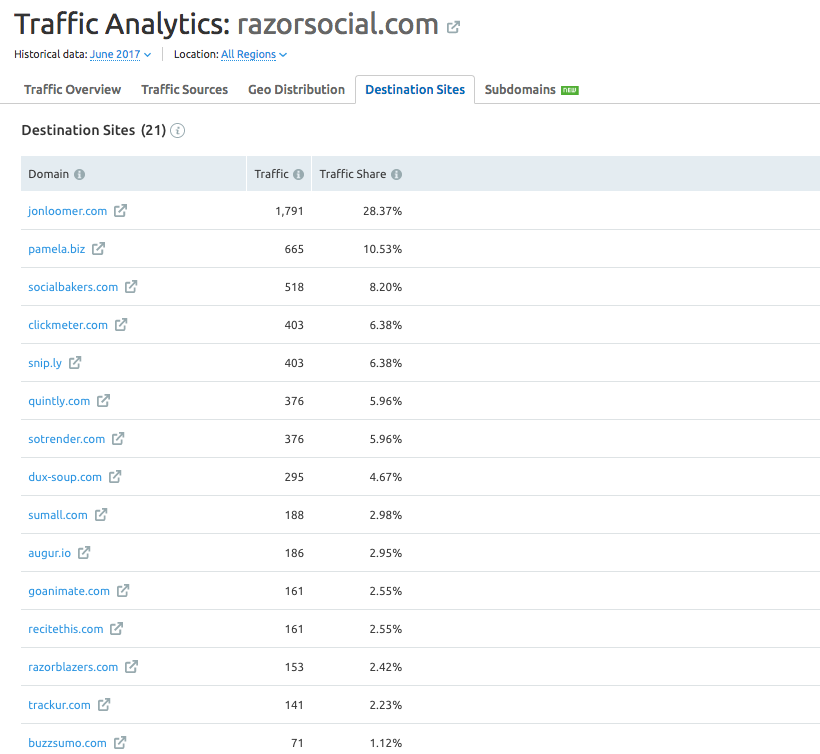
The screenshot below shows that Quintly.com gets almost 400 visits a month. Using Ahrefs, I checked from which pages exactly do Razorsocial’s users go to the second website:
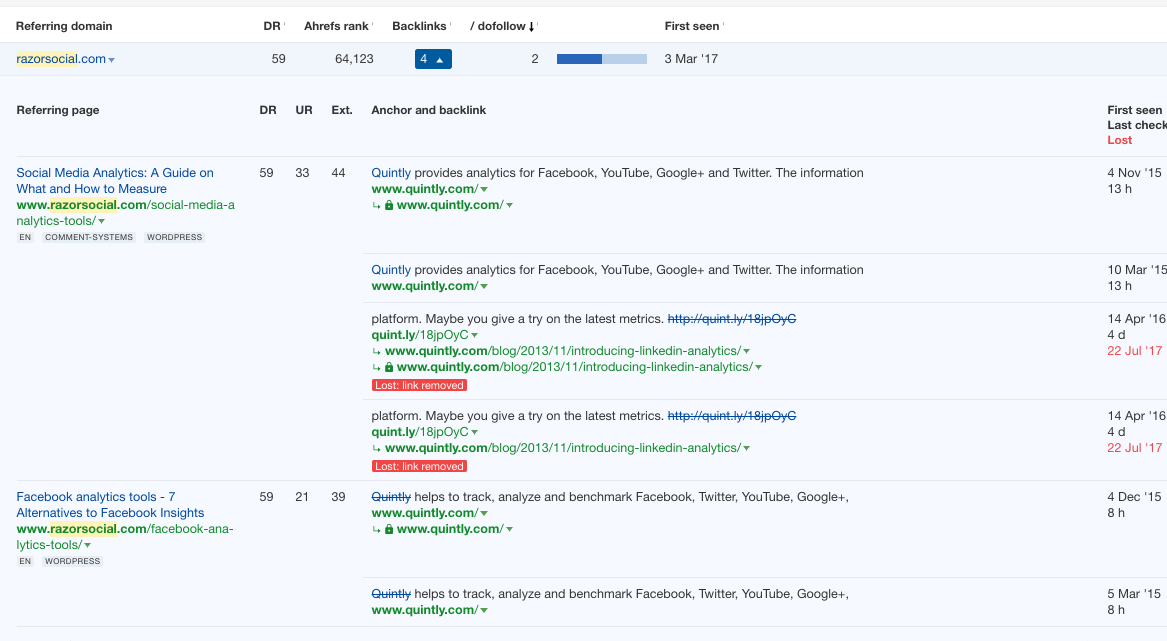
In this case, these two URLs have some organic traffic, and that’s something to take into consideration in your further research:
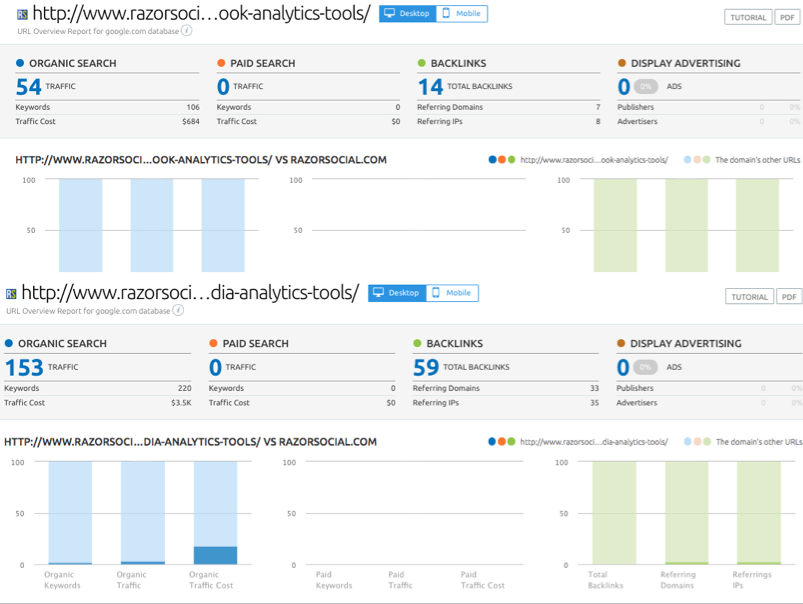
Measuring Results from Sponsored Posts
Once you’ve finished choosing which websites to advertise on, it’s time to think about ways to measure the results of your hard work.
As with any paid traffic channel, you have to figure out how you’re going to measure your conversion results. I would also suggest looking into how much traffic a particular site gets as well as how many views and visitors you can generate with this type of content.
To get a picture of a site’s monthly traffic, go to SimilarWeb and use their free report, which will show you how many visitors the website attracts and which countries those users are from.
Let’s say you want to place your sponsored posts on Adweek. In the screenshot below, you can see that Adweek had more than 11 million visitors in June, and a majority of those visitors are from the U.S., the U.K., and Canada:
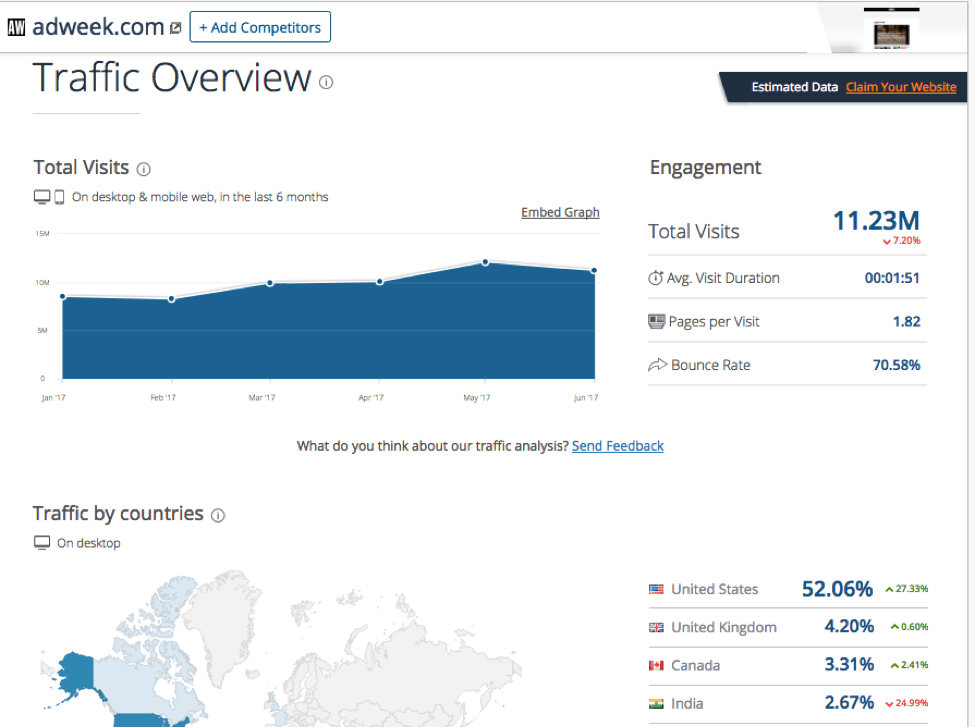
The next thing you should do is find out how many views and visitors you can get with your future post. Sadly, you can’t get ahold of this information for free, but it is available in SimilarWeb’s paid version. It will show you the number of users who visited a particular publisher’s website after reading a specific sponsored article, which is a valuable piece of information.
Optionally, you can take a look at PRNEWS.io’s free tool, which automatically calculates the number of views that you can potentially get from a sponsored post on a particular site.
If you’re looking to increase your number of clicks, you need to place your link in another content piece on a relevant subject, so that a reader can find more details.
Moving further, when you get to the point where you’re trying to maximize your sponsored post’s efficiency, I highly recommend trying user retargeting, because it usually helps you win back those users that haven’t converted into leads yet.
Keep in mind that users who were attracted by a sponsored post require a much longer conversion process than those who come to your site from display ads. So it’s a good idea to find the right way to get their contact information, reach out to them again, and ask them to give your product or service a try.
Conclusion
Display advertising has its pros and cons. On the one hand, they are flexible and allow you to bring back visitors you may have otherwise lost. There is a myriad of ways to personalize remarketing campaigns with options of displaying only those products and services a user has previously viewed on your site.
Nevertheless, remarketing won’t bring you new users.
If getting more traffic from specific websites via paid channels is what you’re looking for, you could consider native ads. However, this is a generic traffic channel. Most ads networks work with sites like The New York Times or The Washington Post that don’t specialize on targeting a specific sub-niche.
So if you’re looking to attract users who consume content on websites relevant to yours, then sponsored content is the right choice for you. It’s likely that traffic coming from websites in your niche will convert better.
In most cases, leads that will be generated through sponsored posts take longer nurturing. This is why you need to design an email marketing funnel beforehand and use it to persuade your potential clients to take advantage of your products or services.
The good thing about sponsored content is that it will help you reach your desired audience and increase your chances of finding more paying clients. Let’s not forget that getting connected with your industry’s influencers and letting them know who you are can both be helpful, and that’s something that sponsored content can do for you.
Image Credits
Featured Image: Unsplash
In-post Images: Screenshots by Alex Tachalova. Taken July 2017.




